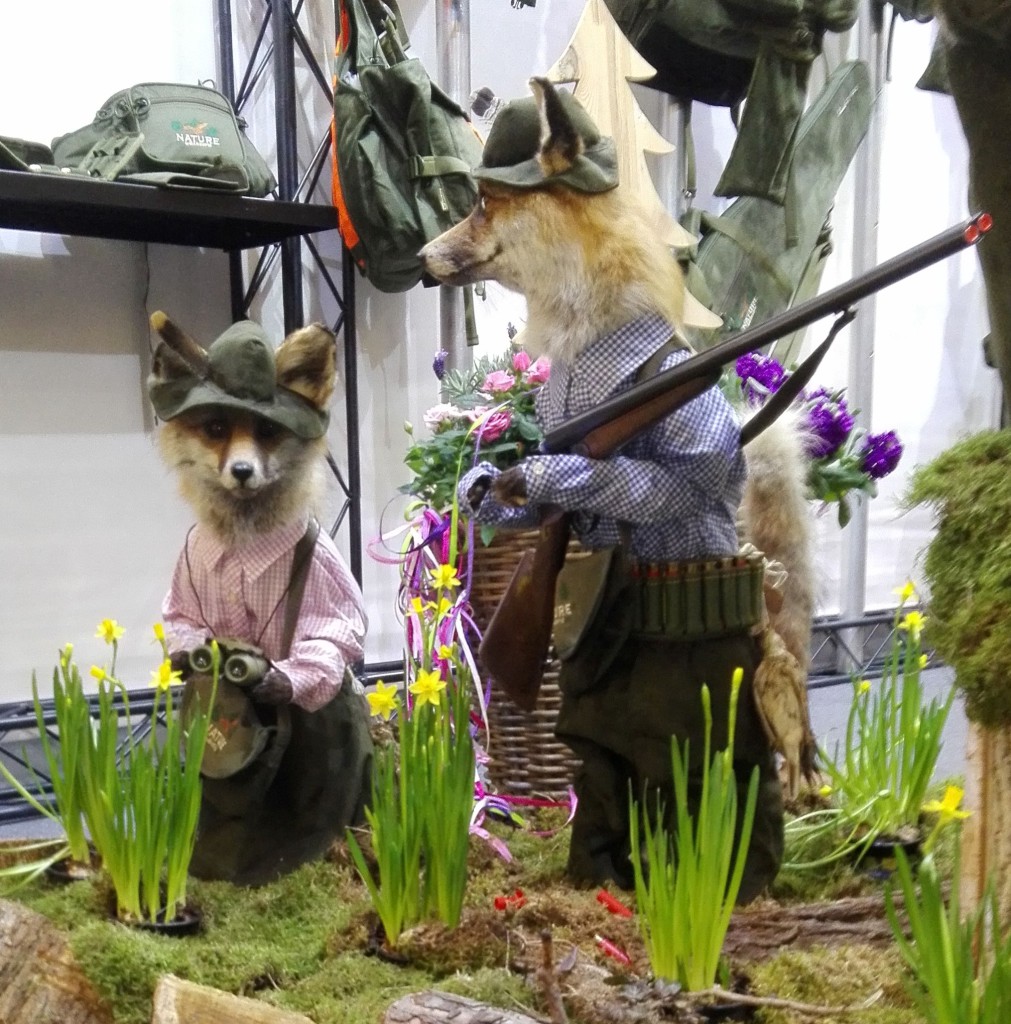The leaves and prices are falling this autumn!
You can find our colorful selection of special offers here in the shop. Get them now!
The offer is valid from September 23rd to November 28th, 2024 and only while supplies last!
The leaves and prices are falling this autumn!
You can find our colorful selection of special offers here in the shop. Get them now!
The offer is valid from September 23rd to November 28th, 2024 and only while supplies last!
Bis in das 19. Jahrhundert war die astronomische Forschung in vielen europäischen Nationen kein Gegenstand der staatlichen Förderung. Die wissenschaftliche Arbeit ruhte zum größten Teil auf den Schultern engagierter Amateure. Heute ist das anders. Die Spitzenforschung erfordert eine langjährige Ausbildung und ist ein Job für Profis. Doch an der Basis gibt es immer noch viele Amateure die mit den Berufsastronomen zusammen arbeiten. Manche Beobachtungen erfordern mehrere Standorte oder viel Flexibilität bei der Wahl des Beobachtungsplatzes. Die Profis können ihre Sternwarten nicht bewegen und sind an einem Ort gebunden. Die Amateure haben dagegen eine bewegliche Ausrüstung und können zur Not auch einem Wolkenloch hinterherfahren. Die Arbeitsfelder der Amateure unterliegen dabei einem ständigen Wandel. Durch Satellitenmissionen haben sich in den letzten Jahren neue Aufgaben erschlossen.
So ist es heute möglich, Sternbedeckungen durch Kleinplaneten mit akzeptabler Genauigkeit vorherzusagen. Durch die Messung der Zeitdauer einer Bedeckung lässt sich der Durchmesser eines Himmelskörpers sehr genau bestimmen. Wenn es gelingt mehrere Schattensehnen zu gewinnen, ist es möglich daraus ein Profil abzuleiten. Über die Kombination des Schattenriss mit einer Lichtkurve kann die Form und die Albedo auf 3 Achsen bestimmt werden. So lassen sich auch ferne Objekte untersuchen, für die keine Raumfahrtmissionen geplant ist. Besonders spannend ist dies für die 2006 von der IAU neu definierte Klasse der Zwergplaneten. Von den fünf Himmelskörpern wurden bislang nur zwei von Raumsonden untersucht. Ceres von der Raumsonde “Dawn” und Pluto von der Raumsonde “New-Horizons”. Für die plutoähnlichen Welten Eris, MakeMake und Haumea sind bislang keine Missionen geplant. Vorbereitung, Bau und Flug würden wegen der großen Entfernung mehrere Jahrzehnte dauern.
Haumea wurde erst 2003 entdeckt und sollte im Januar 2017 erstmals einen Stern bedecken. Diesem Ereignis wurde entgegengefiebert, denn es war die erste Chance etwas genaueres über dieses geheimnisvolle Objekt zu erfahren. Die Beobachtung erwies sich als schwierig, denn Zwergplanet und Stern besaßen nur eine Helligkeit von 17,5 mag, das ist 40.000 mal schwächer als der schwächste Stern den man mit freien Auge sehen kann. Weite Teile Europas waren zudem von Wolken bedeckt. Insgesamt gab es nur acht positive Messungen die jedoch zu verblüffenden neuen Erkenntnissen führten. Haumea ist deutlich größer als bisher vermutet und übertrifft auf einer Achse sogar den bisherigen Champion Pluto. Zudem hat Haumea einen Ring. Der Haumea-Ring ist jedoch viel kleiner und schwächer als beim Gasplanet Saturn. An den Messungen war auch Astroshop.de-Mitarbeiter Bernd Gährken beteiligt. Die Entdeckung war so außergewöhnlich das sie im Wissenschaftsmagazin “Nature” veröffentlicht wurde. Ein Kolloquium zu diesem Thema ist für den Februar 2018 an der Volkssternwarte München geplant.
Swarovski Optik has revised the CL Companion. The ergonomics in particular have been improved.
The eyepiece cup has been enlarged and, therefore, fits better on the eye. This means that the eye is automatically guided to the image. Handling was improved further by moving the connecting bridge upwards towards the eyepiece. This means that the hand can hold the binoculars better. The focus button is easier to reach. The dioptre compensation has now been integrated into the central wheel. This reduces the risk of unintentional adjustment. The weight has also been reduced further. Compared to its predecessor, the 10×30 has been made 15 grams lighter.
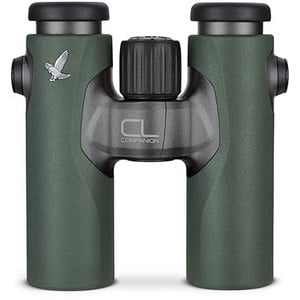
The revised CL now uses the FieldPro carry strap connector. The risk of the carry strap getting twisted has now been considerably reduced. The CL companion now comes in anthracite or green and as a 8×30 or 10×30 version.

Swarovski has recognised the trend towards customisation and now offers a series of binoculars with three different bags and carry straps. The classic dark green bag with black carry strap bears the wording “WILD NATURE”.
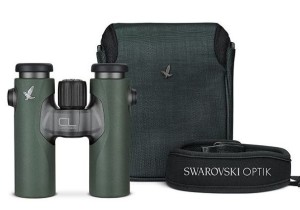
For those who want something a little more modern, chose the binoculars in connection with the “URBAN JUNGLE” accessory pack, a light green bag with a grey carry strap.
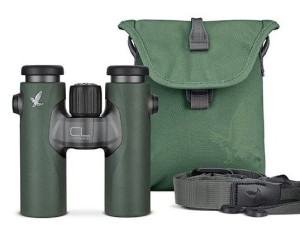
The “NORTHERN LIGHTS” set has been designed for the tradition conscious. You will receive a grey felt bag with black leather appliqués and a grey felt carry strap.
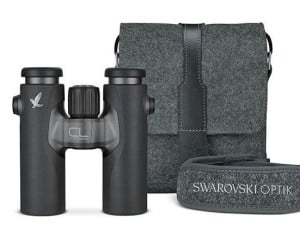
All versions can be delivered from mid-November. The best thing to do is order your favourite combination now!
Just a few weeks ago, the company ZEISS presented the new Victory Harpia during the most important orni-tradeshow, the Birdfair. The new premium spotting scope is available in two variants: With a front lens of 85mm or 95mm. The eyepiece has a zoom eyepiece of 22-65x for the 85mm and 23-70x for the 95mm model. Both models are also available in a Set with eyepiece. Since most spotting scopes are purchased with oblique viewing position, ZEISS has omitted the straight view.
This newly developed spotting scope differs considerably from its predecessors of the Victory Diascope series, simply in the way it is operated. The most significant points are the changes that have been made to the zoom adjustment and the focusing. Both control elements are now integrated in the spotting scope body in form of a well palpable ring, allowing for quick magnification changes and immediate sharpness correction. The big focus ring adapts the Dual-Speed-Focus-System from its predecessor. When turning the focus ring slowly, one is in the fine focusing mode at first: After zooming in on an object, one can smoothly readjust the sharpness to the point. Coarse focusing starts when turning further, where you can quickly change the viewing distance from close to far, and then make fine corrections.
The fact that the optical zoom is no longer located in the eyepiece but in the lens is called the lens-zoom concept. This has two advantages. Firstly, this does not cause “tunnel vision” when increasing the magnification. Secondly, it allows a more compact design of the eyepiece, which considerably enhances the comfort, particularly for users with a narrow inter-pupilar distance or a bigger nose. In addition, the eyepiece is secured against loss.
The third advantage of this new design is the very high and, most importantly, constant field of view!
This scope provides an apparent field of view of 72° over the entire range of the zoom eyepiece. Combined with the new 3x wide angle zoom, spotting birds is eased considerably after changing from binoculars to the spotting scope. The max. field of view is almost 63.2 metres for the 85mm and 58.8 metres for the 95mm, both over a distance of 1000 metres. This large viewing angle in combination with the short close focus limit of 3.5 or 4.5 metres makes this spotting scope the perfect companion for observations in forests. Moreover, it also allows the observation of insects, fungi or plants over the shortest possible distances. The wide field of view facilitates the important work of nature conservationists when counting sea birds or swarms.
Since Digiscoping is a subject that continuously gains in importance, ZEISS also offers suitable solutions for this subject. For quite some time, ZEISS has offered the ExoLens Bracket Smartphone holders for the Apple iPhone 6 or 6s and the Samsung Galaxy S6/S6 edge. An eyepiece adapter ring for the Harpia will obviously also be available. If you do not want to do without the quality of a digital camera, ZEISS will offer an adapter for the filter thread 49, 52 or 58 mm. This adapter will match DSLR, system or compact cameras with a filter thread. For compact cameras without a filter thread, the Quick-Camera adapter II is still available. A Stay-on-Case will also be available for the Harpia models. Once we have more information, we will also offer these products in our shop.
The new Deluxe Spotting Scope from ZEISS will be available for delivery starting in January 2018. We recommend placing your order already now. We initially expect to receive only small delivery quantities.
P.S.: If you own a product of the previous Diascope Series and are still looking for accessories, act now! Eyepieces and other accessories will no longer be produced!
LEICA TRINOVID – an Icon Returns!
On the occasion of the forthcoming 60th anniversary of the initial launch of the Trinovid binoculars, Leica decided to launch a “Facelift” of the classic product.
In 1958, the original Trinovid was a sensation in the market of binoculars. This particular Leica model was characterised by not just one, but three distinctive new features, denoting the name “Trinovid”. Tri for three and nov for novelties. These novelties were the ergonomic construction in roof edge design, the real internal focusing, as well as the highest optical power class Leica was able to offer at the time. Even today, one can see Trinovid models from the 60s and 70s hanging around the neck of many nature observers.
Almost 60 years later, these nostalgic binoculars have been revised; the revision can mainly be noticed “on the inside”. State-of-the-art optical glass materials and coatings make this new edition interesting, not only for collectors. Additionally, it is characterized by a large field of view, whereby the 7×35 offers a viewing angle of 150m over a distance of 1000 metres. The binoculars are very light with compact dimensions and are available in 7×35, 8×40 and 10×40, both in a version with rubber armouring and in a leather coated version with silver or black chrome-coated metal housing. They are filled with nitrogen, making them watertight. However, the leather-coated models in particular should not be exposed to strong rainfall. The light weight reveals its advantages especially on long travels, and friends of retro design should fall in love with these binoculars.
Two Spotting Scope Sets for a Special Price!
Furthermore, Leica linked two popular spotting scopes of the APO Televid series with high quality tripods and tilting heads from GITZO. Probably one of the lightest and most stable carbon tripods in the world.
Both sets are only available in limited quantity and as long as stock lasts. For the Travel Package you save 685,- € and for the Closer to Nature Package you save 836,‑ €, when compared with the retail price recommended by the manufacturer. Act now!
In order to refresh our expert knowledge, we occasionally get up early in the morning: The plane to Hamburg took off at 6 o’clock already, from there we travelled to Schleswig-Holstein. Leica had invited us to comprehensively check and compare their range of binoculars and spotting scopes over a period of two days. For this purpose, we travelled to the Kaltinger Watt. During a walk through the tidal flat and intensive watching out of the sheds of the NABU station, we were able to put the Leica binoculars and spotting scopes extensively to the test.

During a delicious supper in a sociable group of people with dealer colleagues and Leica employees we explained which product developments the market is looking for. Let’s see, whether the one or the other idea will find its way into the product development.
On the second day, a theoretical part first explained, what a Leica product is characterised by. Leica describes this as the “Leica-DNA”: A specification profile that any product in the Leica portfolio must attain in order to make it from development to production.
The Leica DNA includes:
The following series of binoculars are currently in the Leica product range:
Leica Noctivid: This is currently the non-plus-ultra in binoculars for nature and bird watchers. Due to the extremely short close range of approx. 1.5 metres, it is most suitable for watching insects and crayfish as well as plants. Among the premium binoculars from European production, it currently offers the biggest field of view of its class and has – as preferred by many nature observers – an open bridge. Moreover, this instrument is characterised by a very plastic representation, which gives the impression of a very high focal depth.
Leica Ultravid HD-Plus: The Ultravid HD-Plus is the successor of the legendary Ultravid HD and the Ultravid models. At present, it is still one of the most compact binoculars for discerning customers. This model has not been changed from outside, but the newly developed coatings have been adapted to the SCHOTT-HT-Glass that is now used. This allowed for a further improvement of colour purity, contrast and transmission.
Leica Trinovid HD: Leica binoculars have been available under the name Trinovid already since 1963. This model designation is therefore very popular and known by many nature observers. Even today one can see models from the 60s and 70s hanging around the neck of some nature observers. In the meantime, so-called HD glass is also used for the most current version of the Trinovid HD series. This increases the contrast range and reduces colour fringes, leaving you with a much clearer and sharper image. As a measure to slightly reduce the production costs, this binoculars model is produced in their own factory in Portugal. The quality and manufacturing standards are obviously the same as in their factory in Wetzlar. The Trinovid HD series addresses users, who would rather keep an eye on their money, when it comes to judging between costs and the last percent of what is optically possible.
Leica pocket binoculars: Even with the pocket binoculars there is a differentiation between Ultravid and Trinovid. The Ultravid has a shorter close range, a slightly better image performance and, apart from that, is nitrogen filled and thus watertight and protected against steaming up from inside. The Trinovid is a classic, which, in its present form, has been available since the 90s. But still excellent and, above all, compact binoculars.
More interesting for hunters is the Geovid series with integrated rangefinder. Moreover, for customers looking for something special, there are various models or edition models.
In case of spotting scopes the selection is more limited. Here there is only one series “APO Televid” which is available with various aperture diameters and always with straight or inclined view. The Vario Eyepiece is a so-called wide-angle eyepiece and provides a magnification range of 25-50x for all models.
In the field of digiscoping, Leica supplies adapters for their own cameras, but also for system cameras and it is currently the only adapter with diopter compensation in the market. This is simply made to fit via an optional T2-ring for the DSLR or system camera.

All in all, a very successful journey. With less sleep, but excellent impressions concerning Leica products, the Leica market consciousness and the bird life at the North Sea. Over the next few days my colleague will write a bit more about our observations.
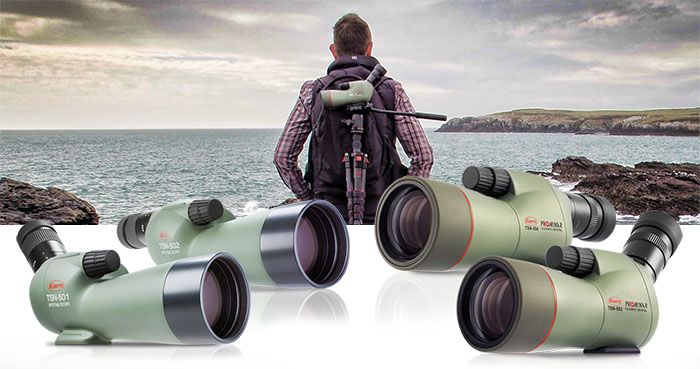 Kowa has recently introduced not just one, but four new compact spotting scopes. These convenient and travel friendly “telescopes” are ideal for all those, for whom a spotting scope had always been too big or too heavy. Or for those who already have a spotting scope, but do not use it because it is too impractical.
Kowa has recently introduced not just one, but four new compact spotting scopes. These convenient and travel friendly “telescopes” are ideal for all those, for whom a spotting scope had always been too big or too heavy. Or for those who already have a spotting scope, but do not use it because it is too impractical.
Kowa offers two quality classes, both with the choice of straight or oblique view. The inexpensive series TSN-500 offers a 20-40x magnification with a front lens diameter of 50mm. The conically shaped focusing knob gives you the feeling of an almost separately controllable coarse and fine focusing drive. The optics are obviously fully multi-coated. The spotting scope comes with a tripod connection and a sighting aid.
The model TSN-501 offers you the inclined or angular view, the TSN-502 is a scope with straight view. The recommended retail price of the manufacturer is 299 € incl. VAT.
When looking for maximum quality in combination with small dimensions, you will surely be interested in the TSN-550-Series with Prominar lens!
This small spotting scope has the same fluorite crystal glass as the bigger sister series TSN-770 and TSN-880. It has a magnification range of 15-45x and is also equipped with a fixed zoom eyepiece. The dual focus allows you to quickly focus roughly, and then point the fine focus to the beak of the bird. The lens shade is extendable and rotatable. The sighting aid is particularly helpful for first-time users of a spotting scope.
The fluorite crystal lens material minimises imaging faults, so that no disturbing colour fringes impair the viewing experience or make the determination of birds a difficult task. However, these high-end optics are not cheap, but they are worth every penny. The recommended retail price is 1799 € incl. VAT. The scope with the oblique view has the model name TSN-553 and when favouring the straight view you should decide on the TSN-554.
The smartphone adapters from Kowa are suitable for all 4 models. With their help, you can take pictures of your observations. For the TSN-550er series you need the adapter ring TSN-AR66Z, for the TSN-500 a specific adapter ring will be introduced in the near future.
Both model series are available from the 18th of August. Just reserve one of the first models for yourself!
Once again, we would like to introduce you to a new product in our range of goods: VORTEX Optics is an optics specialist from Wisconsin, USA, which has adjusted its product range to the needs of nature observers and hunters. We would like to briefly introduce some of the new products.
The VORTEX Viper HD binoculars don’t just knock on the door of high-end binoculars, they break into the sector. The optical system provides everything one would expect from other companies way beyond the 1000.- € mark. HD-optics, XR-FMC-coating, dielectric prism coating with phase correction. This all comes with watertight binoculars with robust rubber armouring.
This binocular series has most recently been totally revised and is characterized by an excellent price/performance ratio. Due to the short connecting bridge between the lenses, it rests perfectly in your hand and the large field of view enables relaxed viewing. All air-glass surfaces are multi-coated. The dielectric coating of the prism minimises the loss of light in the prism system. This ensures bright, real colour and sharp images. These binoculars are sealed and filled with Argon gas , ensuring that the glass is water tight.
For beginners in the hobby, who are looking for a good price/performance ratio.
Besides the binoculars, we also offer the spotting scopes of the Diamondback series. These are available with 80 or 60 mm lens diameters and with angled or straight . The 20-60×80 with angled viewing position most likely is the most popular one. The 20-60 fold zoom gives you the opportunity to scan the field of view with the smallest magnification and then to zoom to view details, to recognize a bird or to view wild animals. The tripod clamp can be rotated and the lens shade is removable. Especially people who use a spotting scope for the first time will find the sighting aid on the lens shade a very convenient feature. Because finding an object with a 20 times magnification is considerably more difficult than with binoculars with a 8 or 10 fold magnification.
In addition to the binoculars and the spotting scopes , we also offer you rifle scopes and mounting rings from VORTEX.
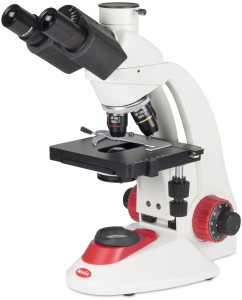 We proudly present a microscope series which is not available from too many sources: The RedLine from Motic.
We proudly present a microscope series which is not available from too many sources: The RedLine from Motic.
With their RedLine series, Motic has concentrated on the essential: the optics.
There is no 1240x magnification of a specimen with a resolution so low that the only thing magnified would be an empty image. Everything is available in a reasonable manner. With the most cost-effective models, a well thought-out offsetting mechanism replaces the cross table. Instead of binocular viewing, which is particularly difficult to adjust for children, the device comes with a monocular with photo tube or, indeed, an integrated camera.
Stereo microscopes, which are offered in the RedLine series with exchange lenses with 10/30x or 20/40x magnification, are particularly popular with children. The specimen stages are equipped with the patented “one touch” system. Both holding arms of the sample clip can be lifted with just one finger.
However, this is just the beginning of microscopy for young scientists. For older pupils there is obviously the binocular and the 100x magnification with immersion lens. Here the “Köhlersche illumination” makes sure that the light is precision-focussed on the specimen. Each microscope in this series is perfectly adapted to young scientists, and there are models available for any age group and application. Even the digitisation, which is indispensable in modern education, plays an important role.
Just look at the 13 models in our shop.
From today you can order the high-end models of camera and binocular manufacturer Pentax from us: The ZD-series!
These roof binoculars are made in Japan, and all models feature phase-corrected prisms. Apart from that they are coated with the enhanced light transmission coating developed by Pentax. This ensures maximum transmission, i.e. light permeability.
Moreover, the outer lenses of the objective and eyepiece are coated with a protective lens coating. This nano technology-based coating allows water to trickle down and eases cleaning. Aspheric lens elements reduce imaging faults. All models are obviously filled with nitrogen and thus protected against heavy rain and high humidity.
On the ED-models unwanted colour errors are additionally corrected by using special lens materials. Colour fringing, which may be particularly annoying in bird watching, is thereby reduced. The housings are made of a light magnesium alloy and a protecting rubber armouring. The ZD 10×43 ED for example has a weight of only 730 grams.
6 different models are available:
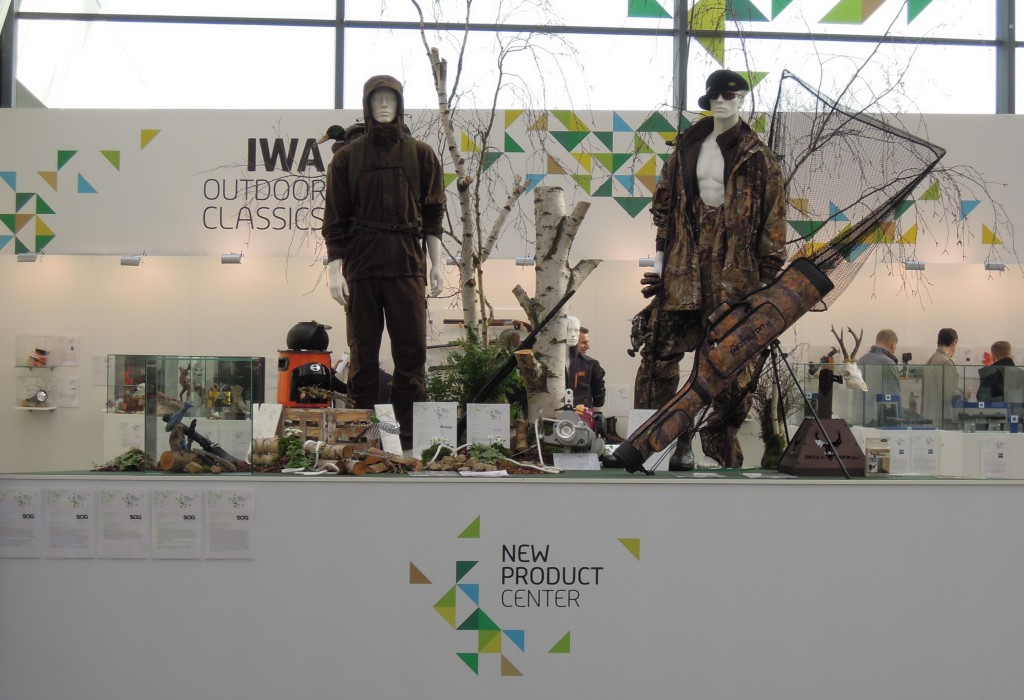
Every year the first weekend in March sees the international weapons exhibition and the Outdoor Classics. This trade show, which experts simply refer to as IWA, is the right time for users of binoculars, spotting scopes, rifle scopes, night vision devices, wildlife cameras and range finders to become acquainted with the latest and most important product developments. We obviously attended the trade show as well to have a look at the innovations. Here is a small excerpt of the most interesting products we will see in the near future.
The most important innovation for any nature watcher is most likely the market launch of Swarovski Optik with their binocular BTX system for lens modules. This enables relaxing nature watching with both eyes. The eye relief can be adjusted, and even a difference in the acuity of vision between both eyes can be corrected. The adjustable forehead support stabilises the image even more. The BTX is available individually or in combination with one of the three lens modules as 30×65, 30×85 or 35×95.
If this magnification is not enough, you can even use the new ME 1.7 teleconverter between the lens and eyepiece modules. This also works with eyepiece modules ATX and STX. This increases the magnification by the factor 1.7, i.e. a 30x magnification then becomes a 51x magnification. Apart from that there is also a new PTH tripod head. To nature photographers such a construction is known as a “gimbal head”. Especially with moving targets this tripod head enables a soft resonant movement, e.g. for water birds slowly swimming past or birds of prey circling high in the sky. And a new balance rail, BR referred to in short, will soon be available. It serves the purpose of compensating the weight on a tripod head and enables the displacement of the centre of gravity in the longitudinal axis. This product will be available for delivery from the beginning of May.
LEICA has been using range-finding technologies in binoculars and monoculars for 25 years. This is the reason for the launch of a special edition of the Geovid HD-B 8×42 and 10×42 and of the Rangemaster CRF 2000-B in 2017. All models are dark green, and the two binoculars come in a loden cloth bag. The special editions are expected to be available from second half of the year. In only a few days the new accessories for binoculars and range finders will be available: For the APO-Televid 82 spotting scope there is now once again a stay-on-case available, which can be ordered in new colour combinations.
ZEISS introduces the successors of the popular Victory Compact-models: the Victory Pockets will be available in the future in 8×25 and 10×25. A bigger front lens diameter on the 8X magnifying model and high-quality FL-glass, which was previously only used in the 32 models, characterise these optical instruments. Apart from that ZEISS has also enlarged the field of view; it now stretches to 130 metres for the 8×25, and the close range was reduced to 1.9 metres. Unfortunately, the carrying case has become considerably bigger and will no longer fit into trouser pockets. However, these products will be available in our shop in a couple of weeks.
Steiner presents a new, light-weight pair of binoculars with range finder: The LRF 1700 in the variants 8×30 or 10×30 is ideal for mountain hunting or on hunting trips. Hunting in this case primarily takes place under sufficient daylight, so that the benefit of the weight overcomes the large aperture. The measuring range reaches up to max. 1700 metres. This is definitely unrealistic under hunting-related aspects, but shows what is technically possible. Apart from that there is also a new pair of roof binoculars from the Safari UltraSharp-series. As a 10×42 it is ideal for stalk hunting or when taking a walk through the woods.
Starting today, we can also offer you the complete range of FUJINON binoculars. While these are aimed more at astronomers or water sports enthusiasts, one or two products in the FMT-series may also be of interest to hunters. These high-quality Porro-system binoculars with single eyepiece focusing are particularly interesting for a hunting session during the night. Once they have been adjusted for your personal needs, nothing else needs to be adjusted for distances from approx. 25 metres all the way to infinite. Thanks to the field flattener eyepieces they provide you with an image which is sharp right to the edge. The legendary robustness and leak tightness of these binoculars even meets the stringent requirements of US authorities and, as a result, should withstand any hunting session in the snow or rain without any problems. For ornithologists, who have to consider the weight, the two KF-models might be of interest. And the Techno-Stabi feature compensates the restlessness of the hand electronically.
In the field of night vision devices we can introduce some new products, too: The current trend is thermal imaging cameras! In contrast to classical night vision devices, not only is the infrared light amplified, which is invisible to the naked eye, but also the heat radiated by an animal or a human being. The image therefore is not as detailed as when taken with generation 2 cameras or higher, but you can also use the device in case of a light fog. A sweat trail can be followed for a few seconds.
In our shop you will now find some products of this category: The best-known devices will surely be of the FLIR brand. In addition to the beginners model, Scout TK Compact, we also offer the Scout II model. This model is available with a resolution of 240, 320 or 640 pixels. In the near future you will also find device of the Scout III series in our shop.
Leupold is now also offering a thermal imaging camera. The design is quite similar to the eyepiece of a rifle scope and, in addition, it is very handy and light. The LTO tracker, however, is not suitable for mounting on weapons, as the very sensitive electronics would not withstand the recoil of a rifle.![]()
New to our product range are also the devices offered by Seek Thermal. These are available as an extension module for your Android or Apple smartphone or as a Reveal-series in form of a hand-held device with display screen.
During the second half of the year we expect further wildlife cameras and rifle scopes from Bushnell and Leupold Tasco also has plans to thoroughly revise their range of binoculars. However, these products will probably only be available in autumn.
Be clever and get your hands on these IWA innovations today!
